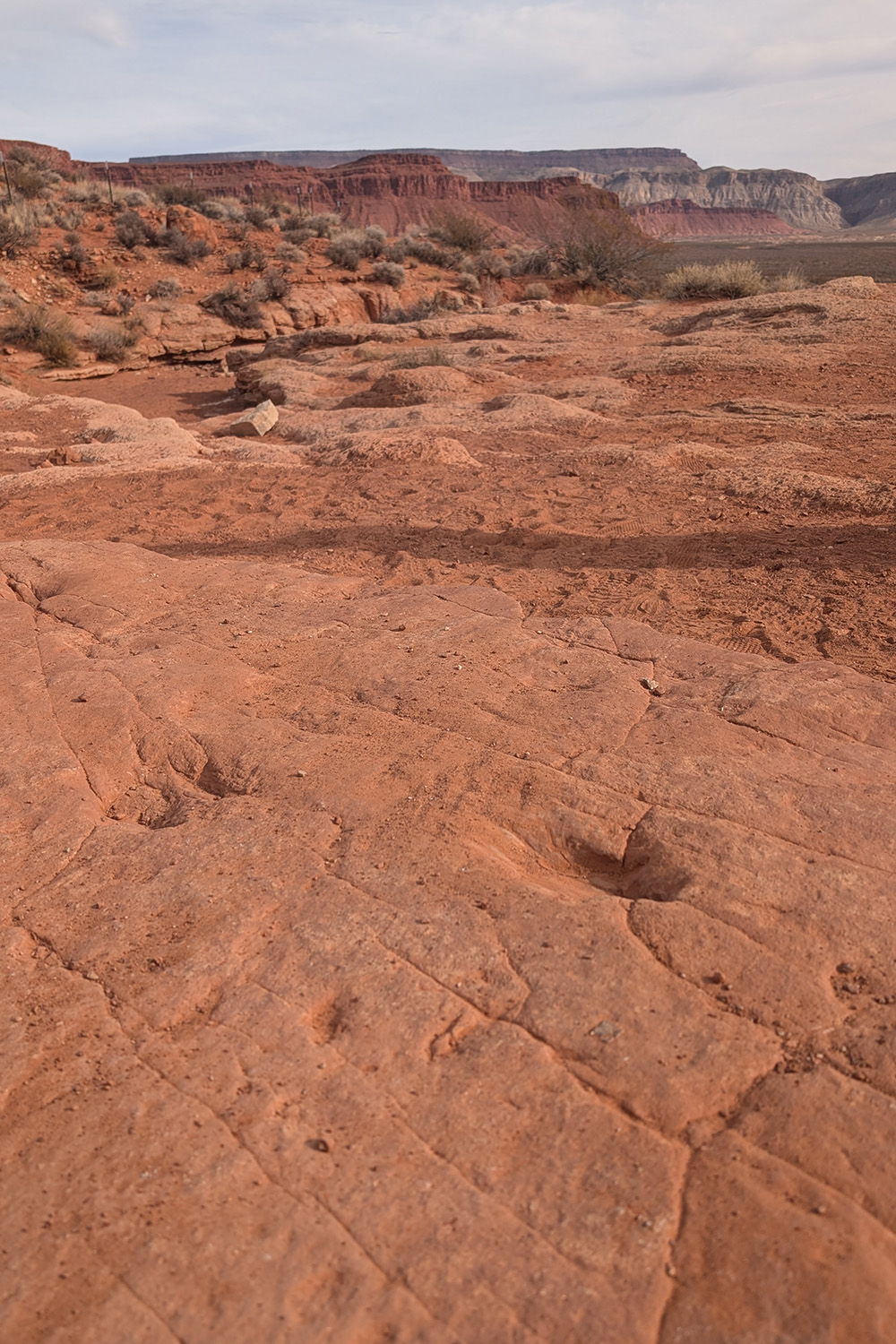Sunday Hike - Warner Valley Dinosaur Track Site

Deep in southern Utah's red rock country lies a remarkable window into prehistoric life - the Warner Valley Dinosaur Track Site. This hidden gem, tucked away in the desert landscape outside St. George, offers visitors a chance to walk alongside the fossilized footprints of creatures that roamed these lands 190 million years ago during the Early Jurassic Period.
Warner Valley itself holds a rich history beyond its prehistoric treasures. Named after the Warner family who were among the first Mormon pioneers to settle the area in the late 1800s, the valley served as important ranching and grazing land for early settlers. Evidence of this pioneering history remains scattered throughout the landscape, with weathered fence lines and old ranch structures standing as silent testimonies to the valley's ranching heritage.
The valley stretches between the Pine Valley Mountains and the Arizona Strip, characterized by striking red and orange Navajo Sandstone formations. These towering rocks, now such an iconic part of southern Utah's landscape, began their story as vast sand dunes during the Early Jurassic Period. Over millions of years, these ancient dunes transformed into the cross-bedded sandstone that defines the region today.
The dinosaur tracks themselves rest on an exposed bedding plane of sandstone, preserved in the open air against the backdrop of Utah's brilliant blue skies. The most prominent prints belong to Eubrontes, a large theropod dinosaur similar to Dilophosaurus. These impressive three-toed tracks, some exceeding 15 inches in length, offer tangible evidence of these magnificent creatures' presence. Alongside these larger impressions, visitors can spot smaller tracks left by Grallator, a turkey-sized theropod that shared this ancient landscape.
The abundance of tracks at this location suggests it may have been near a water source - perhaps an oasis in the ancient desert environment. The tracks were likely made in wet sand or mud, then quickly buried by additional sediment, preserving them for millions of years. This preservation allows modern visitors to literally stand where dinosaurs once walked, creating an intimate connection with Earth's distant past.
The site offers sweeping views of the surrounding desert landscape. On clear days, visitors can gaze across the valley to the Pine Valley Mountains in the north and the vermillion cliffs in the distance. During spring months, the desert comes alive with wildflowers - globe mallow adds splashes of orange, while desert marigolds dot the landscape with bright yellow blooms. The desert vegetation, including blackbrush and Mormon tea, provides a stark contrast to the rich red rocks.
Geological wonders extend beyond the tracks themselves. The surrounding cliffs display distinct cross-bedding patterns in the sandstone, recording the movement of ancient sand dunes. Dark streaks of desert varnish, a natural coating formed by centuries of bacterial activity and mineral accumulation, paint the rock faces in abstract patterns. Each geological feature tells part of the region's long environmental history.
Photography enthusiasts will find endless opportunities at the track site. Morning and late afternoon light brings out the texture in both the tracks and the surrounding sandstone, while storm clouds can create dramatic backgrounds for landscape shots. The tracks themselves photograph best in low-angle light, which emphasizes their depth and detail.
The site's accessibility makes it particularly appealing for families and casual visitors. A well-maintained dirt path leads gently upward from the parking area, requiring only about five minutes of walking to reach the tracks. While the official trail is remarkably short - approximately 0.2 miles round trip - visitors can extend their experience by exploring the surrounding area on established paths or solid rock surfaces. This flexibility allows for anything from a quick visit to a longer desert adventure.
To reach the Warner Valley Dinosaur Track Site from St. George, visitors should take River Road south and turn left onto Warner Valley Road. After the pavement ends, a well-maintained dirt road continues for approximately 8 miles. A signed turnoff to the left leads to the parking area. While most passenger vehicles can easily handle the dirt road in dry conditions, visitors should avoid the area during or immediately after rain when the clay soil becomes treacherous.
Despite its brief length, the Warner Valley Dinosaur Track Site offers an extraordinary opportunity to connect with prehistoric life. The site's family-friendly nature and minimal physical demands make it accessible to visitors of all ages and abilities. Those seeking a longer outdoor experience can easily extend their visit by exploring the surrounding area, searching for interesting rock formations, or simply finding a quiet spot to contemplate the vast span of time that separates us from the creatures who left these remarkable traces of their passage.
Remember to bring water, wear appropriate footwear, and pack sun protection - the desert environment can be unforgiving, particularly during summer months. The site's remote location also means visitors should carry basic supplies and ensure their vehicles have adequate fuel before setting out.

